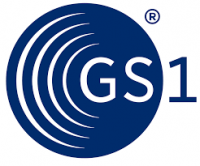
Dr Dominique Guinard CTO of EVRYTHNG, co-chairs the GS1 Digital Link working group that manages the standard. It reports significant momentum globally with brands adopting the barcode as a scalable, future-proof solution to deliver direct-to-consumer experiences, transparency, and proof of brand integrity. “GS1 Digital Link has gained significant momentum over the past 18 months, since its first release, and EVRYTHNG is pleased to be working with global brands using it to connect their product items with active digital identities in the Cloud,” said Niall Murphy, CEO and co-founder of EVRYTHNG. Research shows that 74% of consumers would switch to a brand that provides more in-depth product information, beyond what is on the physical label. While the US Census Bureau reports the majority of retail sales growth in the USA last year happened in eCommerce. The company is working with global brands using the GS1 Digital Link standard to have one code on their product packaging for both consumer engagement and supply chain applications, each item connected with an EVRYTHNG Active Digital Identity™ (ADI) in the Cloud. Mowi ASA, the world’s largest producer of Atlantic salmon, has rolled out the new standard at mass scale. A GS1 Digital Link-enabled QR code on each pack connects to a unique EVRYTHNG ADI managed by its Product Cloud. Consumers simply point their smartphones at the QR code to access item-specific provenance information. “Beyond supply chain traceability, the real-time engagement data and insights help us learn about consumer behaviors so we can meet future needs,” said Ola Brattvoll, COO, Mowi. “We are now able to forge direct customer relationships to build trust and ultimately grow sales.” Thanks to compression, the expanded standard supports smaller codes opening the door for a wider range of product types able to benefit from product digitization at scale. With the introduction of link types, direct-to-consumer (DTC) apps can now request specific content when a product is scanned , such as nutritional facts, provenance data, etc. Consumers’ scanning products results in 10 times more engagements than paid digital ads, according to the company. In the US alone an estimated 11 million households will scan a QR Code in 2020, according to a recent Statista survey, up from 9.76 million in 2018. Some 2 billion iOS and Android smartphones around the world are able to natively scan QR codes without the need for special apps. “The rapid rise of consumers scanning makes this newest release of GS1 Digital Link a game-changer for the consumer products industry — in particular, apparel, beauty, and luxury brands but also brands desiring to deliver very specific targeted content to their customers such as nutraceuticals,” stated Guinard.







